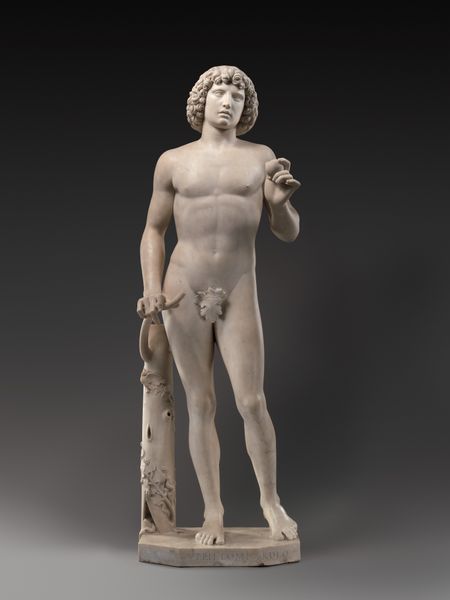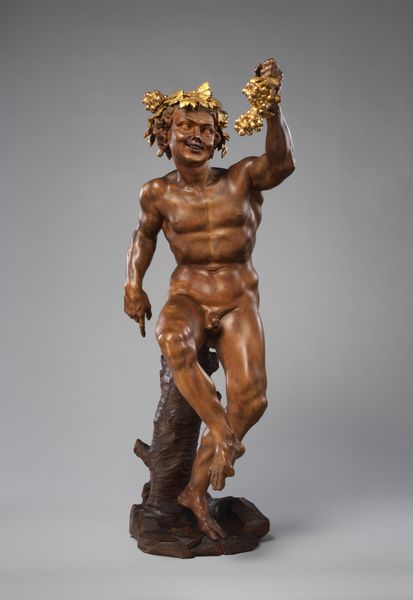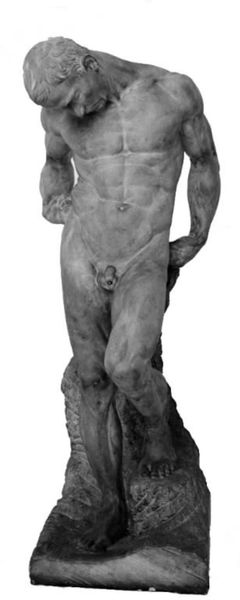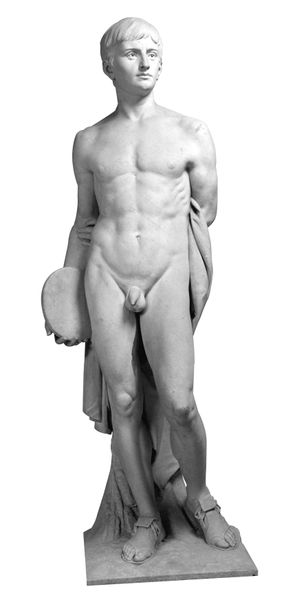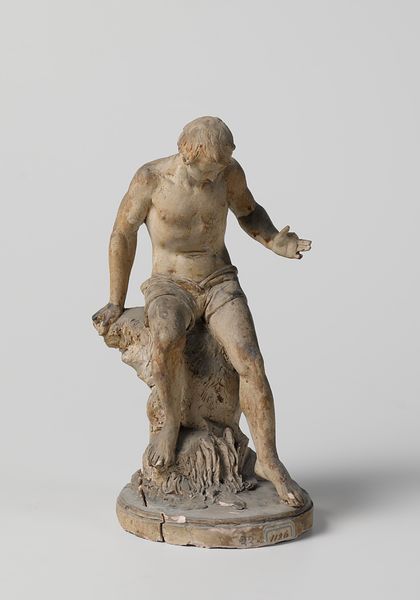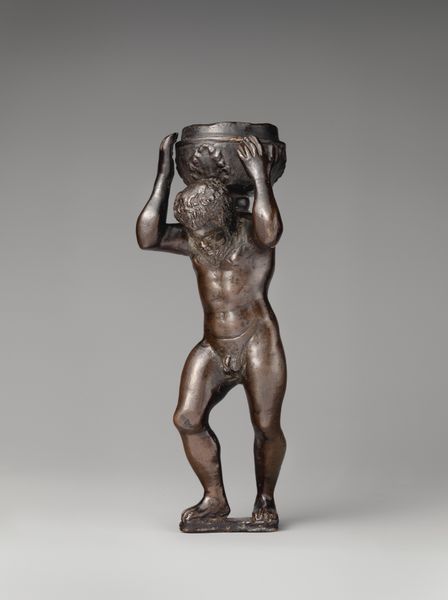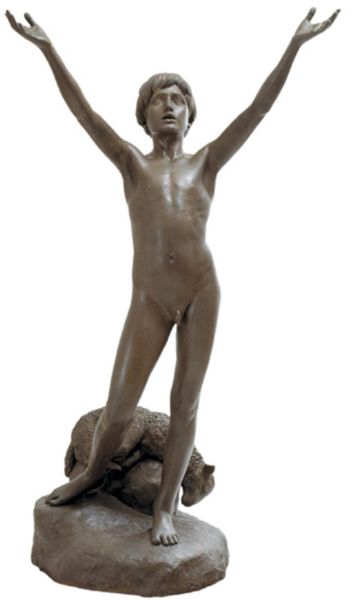
Fragments of a marble statue of the Diadoumenos (youth tying a fillet around his head) 69 - 96
0:00
0:00
sculpture, marble
#
sculpture
#
greek-and-roman-art
#
classical-realism
#
figuration
#
roman-art
#
ancient-mediterranean
#
sculpture
#
marble
#
nude
#
male-nude
Dimensions: H. 73 in. (185.4 cm)
Copyright: Public Domain
Editor: This is "Fragments of a marble statue of the Diadoumenos (youth tying a fillet around his head)," made by Polykleitos sometime between 69 and 96 AD. It's currently held at the Metropolitan Museum of Art. What strikes me immediately is the subject's gaze and contrapposto stance. How do you interpret this work within the broader scope of Roman art? Curator: The Diadoumenos provides a fascinating lens through which to view the cultural preoccupations of the Roman Empire, particularly their appropriation and adaptation of Greek artistic ideals. It's essential to remember that this is a Roman copy of a Greek original. How does the act of replication and recreation affect the statue's meaning for you? Editor: That's interesting. I hadn't really considered the role of "copying" and what it represented. But it looks to me like the Romans revered and sought to emulate the artistic accomplishments of the Greeks? Curator: Precisely. The Romans valued Greek culture, but the Diadoumenos, beyond its aesthetic value, is a symbol ripe for contextual exploration. We need to understand the nuances of power and cultural dynamics at play. In what ways might this idealised male form serve as a representation of Roman imperial authority or notions of masculine virtue? Does it speak to how cultural ideals of masculinity were evolving? Editor: So, you're saying that the statue isn't just a beautiful object, but a loaded cultural artifact that embodies specific values? It makes me think of its accessibility today in a museum, divorced from its original context. Curator: Exactly! Considering that intersectional framework adds layers of meaning. This opens the door to deconstructing the very narrative the sculpture was trying to advance. We are critically examining it outside its cultural production, and looking at how it functions as propaganda. Editor: This completely changes my perspective. I came to this thinking it was just a nice-looking sculpture. I can see the social and historical significance that changes the context completely! Curator: Absolutely! Examining ancient art this way gives us profound insight into historical and social narratives.
Comments
No comments
Be the first to comment and join the conversation on the ultimate creative platform.

